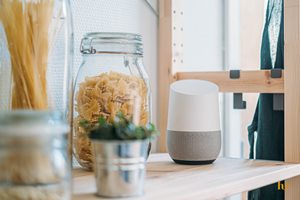IoT and the pursuit of accessibility

Disability has a huge impact across the planet, with up to 1 billion people – 15% of the world’s population – diagnosed with some form of disability, according to the World Bank, says Jocelyn Brown.
They often have complex accessibility requirements, and the Internet of Things (IoT) is a wonderful opportunity to help fulfil these and enhance the independent living of millions of people living with disability.
With Our World In Data estimating that 46% of all people globally use the internet, this represents a huge opportunity to help create independence where technology did not previously allow for it.
Overhauling the home
The nature of a disability can mean that people diagnosed with a condition can spend a lot of time at home. One study conducted by the UK disability charity Mencap found that one in three young people diagnosed with disability spend only one hour daily outside the home.
If someone is to be confined to the home for long period of times, the IoT can make life more independent and more engaging than it would be without smart technology. Voice assistants, smart activators for the likes of heating and lighting, and adaptive sound in the home can be joined together through IoT and provide an immersive and adaptable living experience that provides safety, security and an overall accessible way of life for people living with disability.
Into the outside world
While IoT can improve life in the home, it must be identified as a priority to help people with mobility requirements to be able to get out and about outside of the home, too. Again, smart devices and IoT can help to make this a reality. In a holistic sense, the move towards smart cities is aiding this. In cities of the future, The Atlantic notes how technology powered by Bluetooth and RFID can help to map out a city and make it accessible.
Rather than having difficulty traversing the landscape due to a lack of mobility aids such as ramps and lifts, those people living with disability can use the smart device in their hand to ensure that they have a clear map around the city. This also includes being able to find rest stops.
Total independence

Jocelyn Brown
Can total independence be created for people with mobility issues? Potentially, yes. Through the use of artificial intelligence (AI) technology and augmented reality devices, an effective safety guard can be created for people living with disability that will allow them the absolute security of emergency help and awareness from wider society of their vulnerabilities. Tying in with the adaptive and smart technology of the modern city, this represents a real opportunity for people living with disability to enjoy the levels of independence that people in society without mobility requirements experience.
For people living with disability, independence is often something unattainable. This is changing with the advent of smart technology. Pairing with the IoT will be the most crucial step to improving independence for people living with disability and creating a fairer society.
The author is freelance technology writer, Jocelyn Brown.
Comment on this article below or via Twitter @IoTGN
